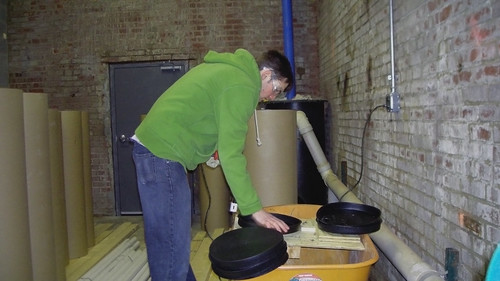District of Columbia science classes help in an enhanced pest detection program.
The Challenge – Non-native wood-boring insects and pathogens that infest and kill trees pose a serious threat to our nation's forests.
But monitoring trees to look for emerging insects is time-consuming and resource intensive. Exotic pests are frequently first introduced in the country’s urban areas where they go undetected until they are well established and have damaged host trees. Enhanced survey and detection methods are needed to identify new introductions of invasive insects and diseases.
The Solution - Using trees removed in the course of regular urban tree care offers an opportunity for targeted detection.
The Morgantown Field Office of the Forest Service’s Northeastern Area State and Private Forestry program is partnering with the District of Columbia Urban Forestry Administration, Department of Transportation, and district public schools, to examine the feasibility and cost of using wood samples from dead and dying trees to detect exotic wood boring pests and identify mortality agents. The project was developed as part of the District of Columbia's Cooperative Forest Health Program.

After a tree is removed, sections of the trunk and crown branches are collected from different parts of the tree, placed in rearing tubes, and incubated at Calvin Coolidge Senior High School. Science students then monitor the samples over the long term, looking for pests to emerge.
This enhanced survey offers an opportunity not only for early pest detection, but also for hands-on demonstration and educational experiences that teach the students about the value of urban trees, the importance of detecting exotic and invasive pests, and the pathways and consequences of the introduction of urban pests. An increased awareness and appreciation of community benefits derived from trees in an urban environment is also a result of the project.
